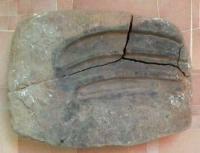You are here
Metallurgical settlement Tarangul.

Best sights Kazakhstan.
“Those who have been here before generations
Dozing in dreams of self-delusion.
Sit down and drink! All the words of the sages
Desert dust and wind breeze”
Omar Khayyam.
Sacred places in Kazakhstan.
The metallurgical settlement Tarangul is located at an altitude of 358 meters above sea level, located 750 meters west of the southern part of the village of Kok-Estek in the Kargaly district in the northern part of the Aktobe region.
Metallurgy has become the main manifestation of the technical achievements of all cultures on the territory of Eurasia. The most important environmental factor for Kazakhstan was copper-rich ores, which became the basis for the rapid development of ancient metallurgy. In the breeding economy of mining and metallurgical centers, metal production came to the fore.
From the point of view of scientific research, currently one of the most interesting sites is the Tarangul archaeological complex. This complex was discovered in 2019 during exploration work by employees of the Institute of Archeology named after A.Kh. Margulan.
Comprehensive studies began to be carried out in the 2020s. In the Tarangul complex there is a metallurgical settlement and 300 meters to the east of it a necropolis consisting of thirty stone mounds. In 2021, research was carried out under the guidance of a researcher at the Institute of Archeology named after A.Kh. Margulan, candidate of historical sciences D. Baitleu, as well as excavations were carried out by a researcher of the National Historical, Cultural and Natural Museum-Reserve "Ulytau" and the Museum of the History of Mining and Smelting named after Maken Toregeldin in the village of Zhezdy A.Sh. Iskakov, an employee of the historical production museum named after K. Satpaev A. Bermaganbetov.
As a result of archaeological excavations at the production site of the Tarangul settlement, a site of very complex three-section metallurgical furnaces was discovered. These furnaces are very similar to the metallurgical furnaces in the Taldysai village, located in the Ulytau region, Central Kazakhstan.
Metallurgical places similar to the Taldysai complexes date back to 70-80 years. XX century. Also, the monuments included in the Atasu complex in the Northern Betpak-Dala (Atasu, Akmustafa, Akmaya, Myrzhyk), studied by M. Kadyrbaev and Zh. Kurmankulov, were discovered. (Kurmankulov Zh., Ermolaeva A.S. Zhanova A.E. Taldysai settlement - an ancient metallurgical monument. Almaty 2012).
Currently, the studied thermal systems and furnaces of the Tarangul metallurgical settlement are at the initial stage, so it is obvious that research in an integrated form will bring new scientific discoveries. A mold for casting sickle-shaped tools, found near the chimney structure of the western funnel of the production site, is one of the most valuable artifacts.
According to the results of spectral trace analysis, one of the exhibits that requires a special study of mold. According to the analyzes, it should be noted that its location, shape, size, shape of the mold made for making the sickle belong to the typology of Kundravin.
The place of distribution of such sickles covers the Southern Urals, as well as the Volga region of Western Siberia. Kundravin-type sickles are directly related to the Alakol culture, and the region we are studying is its cultural group.
Also, at the site of the Tarangul settlement, details of many ceramic vessels were found, including sides, sides and bottoms. Despite the fact that, in accordance with the technological analysis, the found materials provide some information on storage conditions, they do not provide information from the entire stage of the ceramics manufacturing technology.
Details of pottery found at the site of the Tarangul settlement correspond to the Kozhamberdy culture. The archaeological material recovered is also diverse, with 2,739 mammalian bones found based on osteological analyses. Of these, 8 bird bones and 8 rodent bones.
Obviously, the tribes at the site of the Tarangul settlement were smaller than the bones found, and ate the meat of horses. In general, although there are many materials found in the Tarangul complex, it can be indirectly said that this object operated in the Late Bronze Age and was directly associated with the cultural group Kozhamberdy.
As a result of archaeological research by scientists from Kazakhstan and Russia, the presence of the mining and metallurgical center Ural-Mugalzhar was established and the distribution of monuments in the areas of copper mines, including the cultural groups of Western Alakol and Kozhamberdy, was noted. (Materials of the V International Congress of Archeology of the Eurasian Steppes (Turkestan, October 11 - 14, 2022). In 5 volumes. Almaty-Turkestan: named after A. Kh. Margulan. Institute of Archeology, 2022, volume 1. 119. b).
Despite the progress made in the study of the Tarangula complex, ancient mining sites and metal mining sites require in-depth study.
Geographical coordinates of metallurgical settlement Tarangul: N50°43'58.78" E57°52'22.91"
Authority and photos by
Iskakov Aidar Sharkhanovich, National Historical, Cultural and natural museum-reserve "Ulytau" and senior researcher at the Museum of the History of Mining and Smelting named after Maken Toregeldin in the village of Zhezdy.
https://ulytaureserve.kz/726-arheologicheskie-issledovanija-na-meste-metallurgicheskogo-poselenija-tarangul.html







